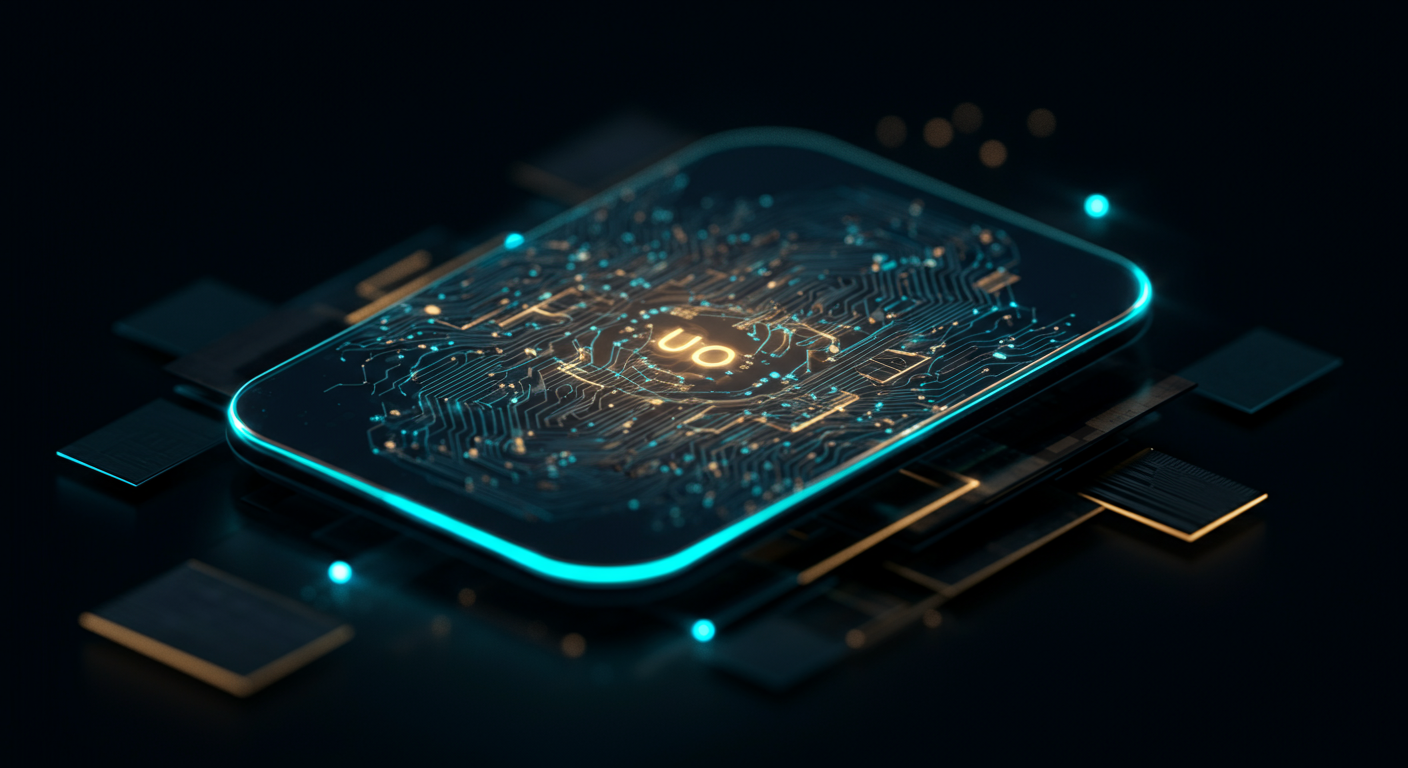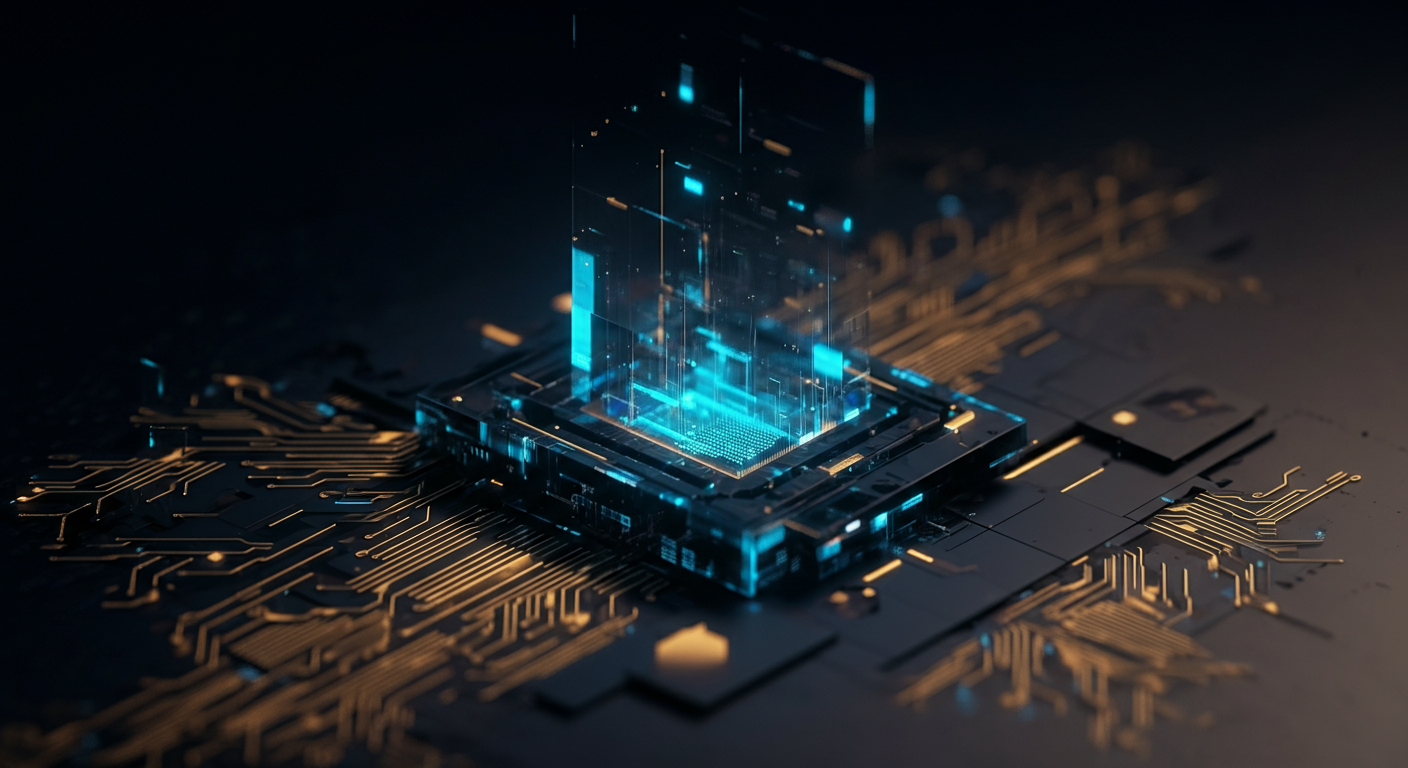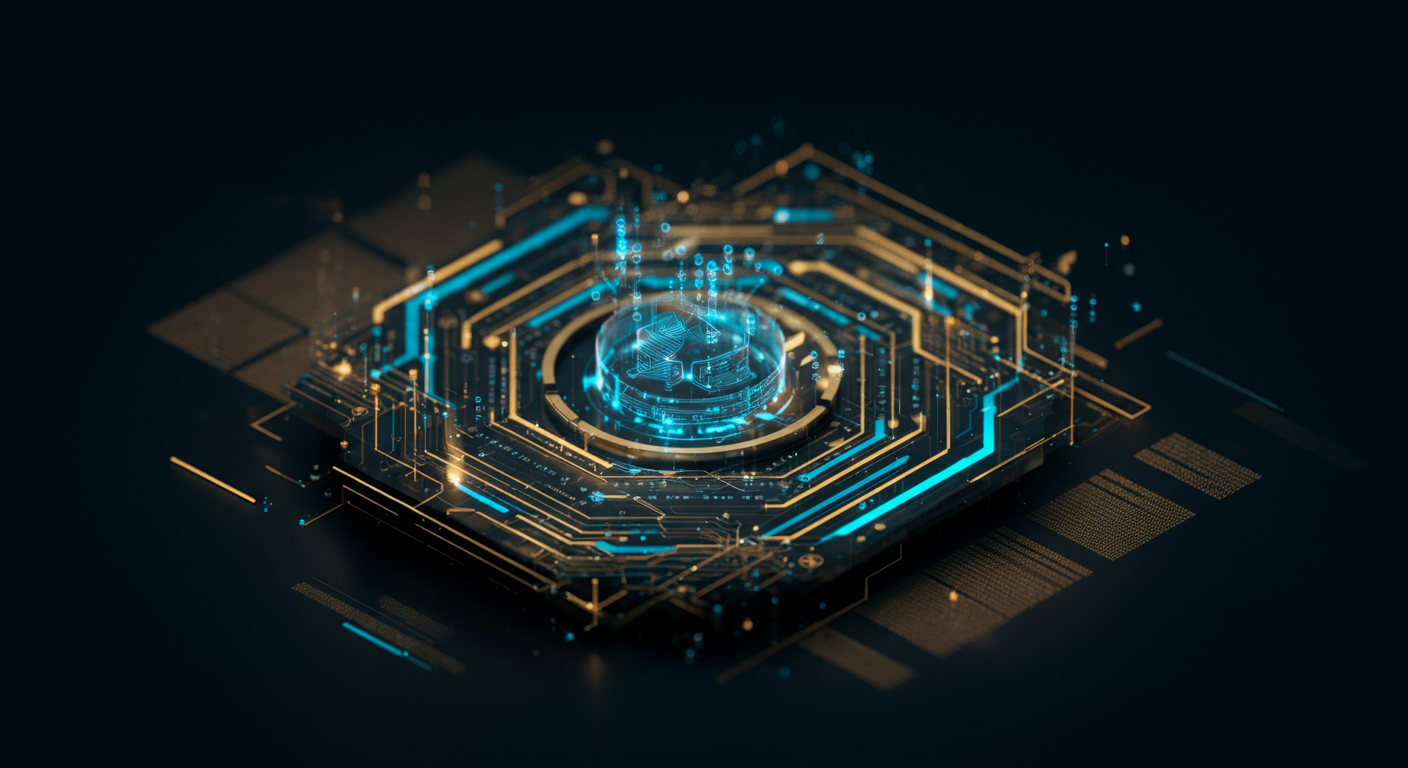OCR Showdown: Deep Dive Comparison of Leading Optical Character Recognition Systems

Optical Character Recognition (OCR) has exploded beyond simple text extraction, becoming a critical technology for data-driven organizations.
The Rise of Intelligent OCR
OCR, at its core, converts images of text into machine-readable text, but modern OCR systems, like Google Cloud Vision OCR and Amazon Textract, now leverage AI and machine learning to:
- Improve accuracy: Advanced algorithms better handle variations in font, image quality, and language.
- Increase efficiency: Automation reduces manual data entry, freeing up human resources for more strategic tasks.
- Enhance data accessibility: Unlock information trapped in scanned documents, PDFs, and images.
Models in the Spotlight
This comparison will cover leading OCR systems including:
- Tesseract OCR
- Google Cloud Vision OCR
- Amazon Textract
- Microsoft Azure OCR
- ABBYY FineReader Engine
- Kofax OmniPage
- Accuracy: How correctly does it transcribe text?
- Speed: How quickly can it process an image?
- Language Support: Which languages are supported?
- Cost: What is the pricing structure?
- Ease of Use: How easy is it to set up and use?
- Integration Capabilities: How well does it integrate with existing systems?
- Output Formats: What file formats are supported?
Tesseract OCR has emerged as a leading open-source choice for converting images of text into machine-readable formats.
History and Development
Tesseract OCR's journey began at Hewlett Packard in the 1980s, later becoming open-source in 2005. Google has actively maintained and improved it since 2006, adding support for new languages and improving its accuracy, marking it as a reliable option for many applications.Strengths
- Open Source: Freely available, allowing for modification and distribution.
- Customizable: Adaptable to specific needs through training and configuration.
- Multilingual: Supports a vast array of languages, making it globally accessible.
Weaknesses
- Accuracy Concerns: Can be less accurate than commercial OCR systems, especially with complex layouts or poor image quality.
- Preprocessing Requirements: Often needs image preprocessing to achieve optimal results.
- Requires Image Generation AI
Use Cases
- Simple OCR Tasks: Ideal for digitizing straightforward text documents.
- DIY Projects: Great for hobbyists and developers integrating OCR into personal projects.
- Custom Solutions: Well-suited where specific configurations or unique requirements exist.
API and Integration
Tesseract OCR provides an API for integration into various programming languages. This allows developers to easily incorporate its OCR capabilities into their applications, enabling automated text extraction. It's a perfect tool for Software DevelopersCommunity Support
A large and active community supports Tesseract, providing resources, tutorials, and assistance. Online forums and documentation offer valuable help for troubleshooting and advanced usage.Google Cloud Vision OCR: Scalable and Intelligent
Harnessing the power of Google's infrastructure, Google Cloud Vision OCR offers a robust solution for converting images to text, seamlessly integrating with the Google Cloud Platform. This integration enables users to build sophisticated applications leveraging Google's vast ecosystem.
Accuracy and Scalability
Google Cloud Vision OCR stands out for its high accuracy and scalability, making it suitable for handling large volumes of documents. Its advanced features include:
- Handwriting recognition, transforming handwritten notes into digital text.
- Document understanding, capable of parsing complex layouts and extracting structured data.
Strengths and Weaknesses
- Strengths: High accuracy, scalability, and advanced features. It also seamlessly integrates with other Google services, such as Google Drive and Google Translate.
- Weaknesses: Cost can be a barrier for high-volume usage, and it requires a stable internet connection.
Use Cases and Pricing

Ideal use cases include large-scale document processing for archives, image analysis in research, and applications demanding sophisticated feature sets. Google Cloud Vision OCR offers a flexible pricing structure with a free tier for initial exploration, making it accessible to both small and large organizations. Check out Guide to Finding the Best AI Tool Directory for resources on cost optimization.
In summary, Google Cloud Vision OCR provides powerful, scalable OCR capabilities deeply integrated with the Google Cloud ecosystem, perfect for organizations needing high accuracy and advanced features. Next, we'll analyze another leading OCR solution.
Amazon Textract: Optimized for AWS Ecosystem
Amazon Textract is an Optical Character Recognition (OCR) service from Amazon Web Services (AWS) designed to extract text and data from scanned documents. By leveraging AI, Textract identifies and extracts typed text, handwriting, and structured data from forms and tables.
Strengths
- AWS Integration: Seamless integration with other AWS services like S3, Lambda, and IAM, offering a streamlined workflow.
- Structured Data Extraction: Excels at extracting data from structured documents like invoices and forms. For example, it accurately pulls data such as invoice numbers, dates, and amounts.
- Security: Strong security features inherited from AWS, including encryption and access controls.
Weaknesses
- AWS-Centric: Primarily designed for AWS environments, which might limit its appeal for organizations using other cloud platforms or on-premise solutions.
- Complexity: Can be more complex to set up compared to simpler, standalone OCR tools.
Ideal Use Cases
- AWS-heavy businesses: Companies with significant investments in the AWS ecosystem find Amazon Textract particularly useful.
- Automated Data Extraction: Ideal for automating data extraction from forms, invoices, and other structured documents.
- Table Extraction and Form Processing: It proficiently extracts data from tables and processes forms. Think automatically populating databases from scanned applications.
Harness the power of intelligent document understanding with Microsoft's cloud-based OCR solution.
Enterprise-Grade OCR
Microsoft Azure OCR, part of Cognitive Services, focuses on providing enterprise-level optical character recognition. Think secure, compliant, and seamlessly integrated into the Azure ecosystem, making it a strong choice for organizations with stringent requirements.Strengths: Security and Integration
- Robust Security: Azure OCR benefits from Microsoft's comprehensive security infrastructure.
- Compliance Certifications: Adheres to industry standards.
- Azure Integration: Works seamlessly with other Azure services like Azure AI Search for indexing and Power BI for data visualization. Integration with Microsoft Copilot enhances app building and automation.
Weaknesses: Complexity and Cost
- Pricing: Can be complex and dependent on usage volume.
- Technical Expertise: Implementing and managing Azure OCR may require specialized skills.
Ideal Use Cases
- Enterprise environments.
- Regulated industries like finance and healthcare.
- Applications requiring strong security and compliance, for example, processing sensitive patient records.
Microsoft Azure OCR provides secure, scalable, and intelligent document processing, but consider the complexity and pricing before diving in.
One of the original pioneers, the ABBYY FineReader Engine maintains a strong presence in the OCR landscape.
ABBYY FineReader Engine: The Legacy Leader in OCR
ABBYY FineReader Engine is a software development kit (SDK) tailored for developers. ABBYY FineReader Engine has built a legacy on consistently delivering high-quality OCR solutions and enables the integration of OCR capabilities into various applications.
Strengths
- Accuracy: Noted for its consistently high accuracy rates.
- Comprehensive Features: Includes functionalities for complex document processing.
- Language Support: Supports a wide range of languages and document types.
Weaknesses
- Cost: Often more expensive than cloud-based alternatives.
- Resource Intensive: May require more local computing resources than cloud-based options.
SDK and Customization
- Offers a robust SDK to customize OCR processes.
- Allows fine-grained control over recognition parameters.
- Supports integration with various programming languages.
Complex Document Processing
ABBYY is capable of handling intricate document structures. Features include:- Automatic document layout detection.
- Table recognition and extraction.
- Support for a variety of image formats.
ABBYY FineReader Engine remains a powerful solution, particularly suited for professional applications requiring high precision and extensive customization options, though cloud-based OCR-Optical Character Recognition options are now available.
Kofax OmniPage reigns as a document automation powerhouse, streamlining processes for businesses of all sizes.
Overview
Kofax OmniPage is OCR software emphasizing converting paper and image-based documents into editable and searchable digital files. It is designed to improve document workflows.Strengths
- Superior Conversion: Excels at accurately converting various document types into editable formats.
- Advanced Automation: Features robust workflow tools for automating document processes.
- Kofax Integration: Seamlessly connects with other Kofax products for enhanced functionality. This allows users to integrate their document management processes across different platforms.
Weaknesses
- Complexity: Setting up and managing can be challenging, especially for non-technical users.
- Price: It lands on the higher end of the price spectrum compared to other OCR solutions.
Ideal Use Cases
- Large-Scale Processing: Perfect for organizations handling high volumes of documents.
- Automated Workflows: Simplifies and automates document-driven workflows.
- Advanced Features: Ideal for businesses needing advanced features like zone OCR and scripting.
PDF Conversion and Editing
OmniPage offers comprehensive PDF conversion capabilities, allowing users to transform PDFs into various editable formats and create searchable PDFs from scanned documents. This tool also allows you to edit PDF content directly.Platform Integration
Integration capabilities extend to capture and workflow platforms, enabling seamless incorporation into existing business systems, such as enterprise content management (ECM) and document management systems. This capability enhances the OCR processes.Conclusion: Although Kofax OmniPage carries a higher price and potential complexity, its document conversion, workflow features, and integration are unmatched for organizations requiring enterprise-level OCR automation; next up, we'll examine more OCR solutions, such as ChatGPT.
Sure, here's the raw Markdown content you requested.
Comparative Analysis: Accuracy, Speed, and Cost
Choosing the right Optical Character Recognition (OCR) system requires a careful balancing act between accuracy, processing speed, and cost-effectiveness. It's like choosing between a meticulously crafted Swiss watch, a high-speed Japanese bullet train, and a reliable-yet-affordable German automobile.
OCR Models: A Side-by-Side Comparison

Here’s a summary table of leading OCR models, outlining their strengths and weaknesses:
| Feature | Tesseract (Open Source) | Google Cloud Vision API OCR | Azure Computer Vision OCR | AWS Textract |
|---|---|---|---|---|
| Accuracy | Good for clean documents; struggles with complex layouts | Excellent, especially with varied fonts | Very good; excels with handwritten text | Good; excels with tables |
| Speed | Fast, particularly on CPU | Moderate; scales well with cloud resources | Moderate; cloud-dependent | Moderate; cloud-dependent |
| Cost | Free | Pay-per-use; tiered pricing | Pay-per-use; tiered pricing | Pay-per-use; tiered pricing |
| Document Types | Scanned documents, simple images | Scanned documents, images, PDFs | Images, PDFs, handwritten notes | Scanned docs, invoices, tables |
| Strengths | Open source, customizable, offline processing | High accuracy, broad language support | Strong handwriting recognition | Good table extraction |
| Weaknesses | Struggles with noise, complex layouts | Cost can escalate quickly | Cost can escalate quickly | Cost can escalate quickly |
Accuracy Across Document Types
"Accuracy is paramount, but what 'accurate' means shifts with the task. A blurry scan of a historical document demands different strengths than a crisp, modern PDF."
- Scanned Documents: Consider Tesseract for basic tasks. However, cloud-based APIs generally offer higher accuracy for degraded documents.
- Images: Google Cloud Vision API and Azure Computer Vision OCR often excel due to their advanced preprocessing and deep learning models.
- PDFs: All listed systems perform reasonably well, but AWS Textract shines when extracting data from tables within PDFs.
Speed vs. Complexity
Processing speed depends heavily on file size and complexity:
- Small Files: Local OCR engines like Tesseract can be surprisingly fast.
- Large or Complex Files: Cloud-based solutions leverage scalable infrastructure for faster processing, but network latency becomes a factor.
- Complex layouts: can greatly impact processing speed, regardless of the system.
Cost Considerations
- Free is Great... But: Tesseract offers zero cost but demands more setup and might require pre- or post-processing to achieve acceptable results.
- Pay-as-You-Go Caveats: Cloud-based APIs seem affordable until you process thousands of documents. Carefully estimate usage and factor in potential overruns. Consider pricing intelligence tools to track and optimize costs.
- Hidden Costs: Time spent cleaning up inaccurate OCR results is also a cost, sometimes exceeding the initial processing fee.
Choosing the Right OCR Solution: Key Considerations hinges on understanding your specific needs before diving into the technical specifications.
Assessing Your OCR Needs
Before comparing OCR (Optical Character Recognition) systems, ask yourself:- What accuracy level do you require? Is near-perfect transcription essential, or can you tolerate some errors? Higher accuracy often means higher costs.
- What types of documents will you be processing? Consider the complexity of layouts, font types, and image quality.
- What's your budget? Open-source solutions exist, but might demand more technical expertise.
- What level of support do you need? Consider both community and vendor support.
Document Types Matter
The best OCR system for you significantly depends on the types of documents you will be processing.- Scanned documents: Images can be low quality.
- PDFs: May contain both text and images.
- Handwritten notes: Require highly sophisticated OCR engines. AI Data Labeling can be helpful here.
- Invoices/Forms: Accurate data extraction from structured documents is critical.
Integration and Scalability
"Can this solution integrate smoothly with your existing workflow?"
- Consider API integration for seamless workflow automation. Many OCR tools offer APIs for integration with other applications.
- Scalability is crucial as your needs grow. Cloud-based OCR services are typically more scalable than on-premise solutions.
Optical Character Recognition (OCR) is evolving at warp speed, and it’s poised to revolutionize how we interact with documents.
AI and Machine Learning Domination
AI and machine learning are the driving forces behind modern OCR technology. Instead of relying solely on predefined character shapes, systems like Tesseract OCR (a popular open-source engine) now use neural networks to learn and adapt to various fonts, styles, and even degraded image quality.- Example: Imagine trying to scan a crumpled receipt from 1985; AI-powered OCR can often decipher the text with surprising accuracy.
Handwriting and Document Understanding
Advancements aren't limited to printed text. Handwriting recognition is rapidly improving, making it easier to digitize handwritten notes, historical documents, and forms. Furthermore, OCR is now integrated with document understanding capabilities, enabling AI to:- Identify key fields (e.g., names, dates, addresses)
- Understand document structure (e.g., invoices, contracts)
RPA and Automated Workflows
OCR plays a crucial role in automated workflows and Robotic Process Automation (RPA). By converting unstructured data (like scanned documents) into structured, machine-readable data, OCR enables systems to:- Automatically process invoices
- Extract data from legal contracts
- Validate identity documents
Trends and Predictions
The future of OCR is bright, with trends pointing toward:- Higher Accuracy: Error rates will continue to plummet as AI models become more sophisticated.
- Increased Speed: Real-time OCR will become commonplace, enabling instant data extraction.
- Ubiquitous Accessibility: Mobile devices and edge computing will bring OCR capabilities to every corner of the world. Think instant translation of street signs via your phone or automated data entry on resource-constrained devices.
Conclusion: Empowering Your Business with OCR
Optical Character Recognition (OCR) is a powerful tool, and choosing the right system can significantly impact your business's efficiency. It's about more than just converting images to text; it's about finding the solution that perfectly fits your specific documents, workflows, and accuracy requirements.
Key Takeaways
- Precision Matters: The best OCR isn't just about speed; it's about accuracy. High-quality results minimize the need for manual correction, saving you valuable time and resources.
- Customization is Crucial: Each OCR system offers unique features. Consider your specific needs – are you processing invoices, legal documents, or handwritten notes? Choose accordingly.
- Integration is Essential: A seamless workflow is key. Ensure the OCR solution integrates smoothly with your existing systems, such as document management software or cloud storage.
Next Steps
- Explore Recommended Models: Dive deeper into solutions like PaddleOCR-VL, known for its multilingual capabilities. This tool is especially beneficial if your business handles documents in multiple languages.
- Leverage Resources: Consider a tool like GooeyAI, which allows you to create a graphical user interface (GUI) around your Python scripts. This can make even the most sophisticated OCR solutions more accessible to your team.
- Assess Open Source Options: Open-source OCR tools like Tesseract offer customization and flexibility but might require more technical expertise to implement effectively.
Keywords
OCR, Optical Character Recognition, Tesseract OCR, Google Cloud Vision OCR, Amazon Textract, Microsoft Azure OCR, ABBYY FineReader Engine, Kofax OmniPage, Document Scanning, Data Extraction, Text Recognition, OCR Accuracy, OCR Software Comparison, Best OCR, Handwriting Recognition, Document Automation
Hashtags
#OCR #OpticalCharacterRecognition #AI #DocumentAutomation #DataExtraction
Recommended AI tools
ChatGPT
Conversational AI
AI research, productivity, and conversation—smarter thinking, deeper insights.
Sora
Video Generation
Create stunning, realistic videos and audio from text, images, or video—remix and collaborate with Sora, OpenAI’s advanced generative video app.
Google Gemini
Conversational AI
Your everyday Google AI assistant for creativity, research, and productivity
Perplexity
Search & Discovery
Clear answers from reliable sources, powered by AI.
DeepSeek
Conversational AI
Efficient open-weight AI models for advanced reasoning and research
Freepik AI Image Generator
Image Generation
Generate on-brand AI images from text, sketches, or photos—fast, realistic, and ready for commercial use.
About the Author

Written by
Dr. William Bobos
Dr. William Bobos (known as 'Dr. Bob') is a long-time AI expert focused on practical evaluations of AI tools and frameworks. He frequently tests new releases, reads academic papers, and tracks industry news to translate breakthroughs into real-world use. At Best AI Tools, he curates clear, actionable insights for builders, researchers, and decision-makers.
More from Dr.

